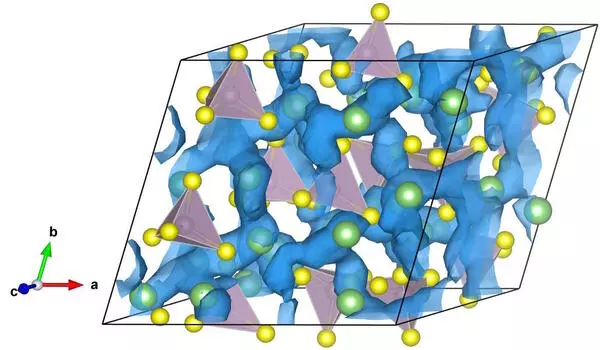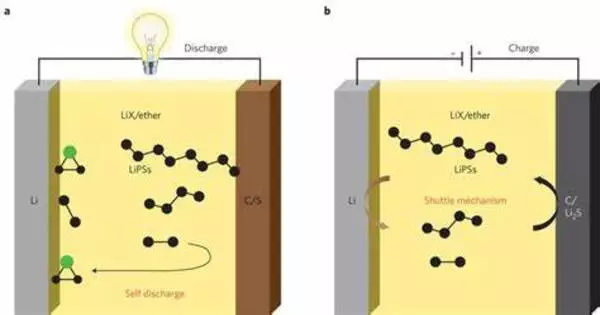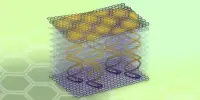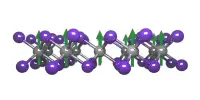High-entropy compounds are made up of several elements in nearly equimolar proportions. Researchers may experiment with various elemental combinations to create high-entropy solid-state conductors. The diverse elemental combination can result in unique crystal structures and electronic properties, potentially improving ionic conductivity.
Researchers from Tokyo Tech report that by increasing the complexity of their composite superionic crystals, solid electrolytes with high lithium-ion conductivity can be designed for millimeter-thick battery electrodes. This new design rule allows for the creation of high-entropy active materials while retaining superionic conduction.
As the world moves toward a greener, more sustainable energy economy, the world’s reliance on lithium (Li)-ion batteries is expected to grow. Scientists all over the world are working to create smaller, more efficient batteries that can keep up with the ever-increasing demand for energy storage. All-solid-state lithium batteries (ASSLBs) have piqued the interest of researchers in recent years due to their novel use of solid electrolytes rather than conventional liquid electrolytes.
Many studies have shown that inorganic ionic conductors tend to show better ion conductivity after multi-element substitution probably because of the flattened potential barrier of Li-ion migration, which is essential for better ion conductivity.
Prof. Kanno
Solid electrolytes not only protect the battery from leaks and fires, but also provide superior energy and power characteristics. However, their stiffness causes poor cathode surface wetting and a lack of homogeneous Li ion supply to the cathode. As a result, the capacity of the solid-state battery decreases. When compared to conventional electrodes with typical thicknesses of < 0.1 mm, the issue becomes more pronounced in thick battery cathode electrodes such as millimeter-thick ones, which are a more advantageous electrode configuration for realizing inexpensive and high-energy-density battery packages.
Fortunately, a recent study published in Science discovered a solution to this problem. The paper, written by a group of researchers led by Prof. Ryoji Kanno of Tokyo Institute of Technology (Tokyo Tech), describes a new strategy for producing solid electrolytes with improved Li-ion conductivity. Their work establishes a design rule for the multi-substitution approach to synthesizing high-entropy crystals of lithium superionic conductors.

“Many studies have shown that inorganic ionic conductors tend to show better ion conductivity after multi-element substitution probably because of the flattened potential barrier of Li-ion migration, which is essential for better ion conductivity,” points out Prof. Kanno. This was where they started their research. For the design of their new material, the team took inspiration from the chemical compositions of two well-known Li-based solid electrolytes: argyrodite-type (Li6PS5Cl) and LGPS-type (Li10GeP2S12) superionic crystals. They modified the LGPS-type Li9.54Si1.74P1.44S11.7Cl0.3 via multi-substitution and synthesized a series of crystals with composition Li9.54[Si1−δMδ]1.74P1.44S11.1Br0.3O0.6 (M = Ge, Sn; 0 ≤ δ ≤ 1).
The researchers used a crystal with Ge = M and δ = 0.4 as a catholyte in an ASSLB with an 1- or 0.8- millimeter-thick cathode. The former and latter ASSLB exhibited discharge capacities of 26.4 mAh cm−2 at 25 °C (1 mm) and 17.3 mAh cm−2 at −10 °C (0.8 mm), respectively, with the area-specific capacity 1.8 and 5.3 times larger than those reported for previous state-of-the-art ASSLBs, respectively. Theoretical calculations suggested that the enhanced conductivity of the solid electrolyte could be a result of the flattening of the energy barrier for ion migration, caused by a small degree of chemical substitution in the above-mentioned crystal.
This research demonstrates a novel method for producing high-entropy solid electrolytes for millimeter-thick electrodes while maintaining their superionic conduction pathways. “In effect, the proposed design rule establishes a solid foundation for investigating new superionic conductors with superior charge-discharge performance, even at room temperature,” Prof. Kanno concludes.
















